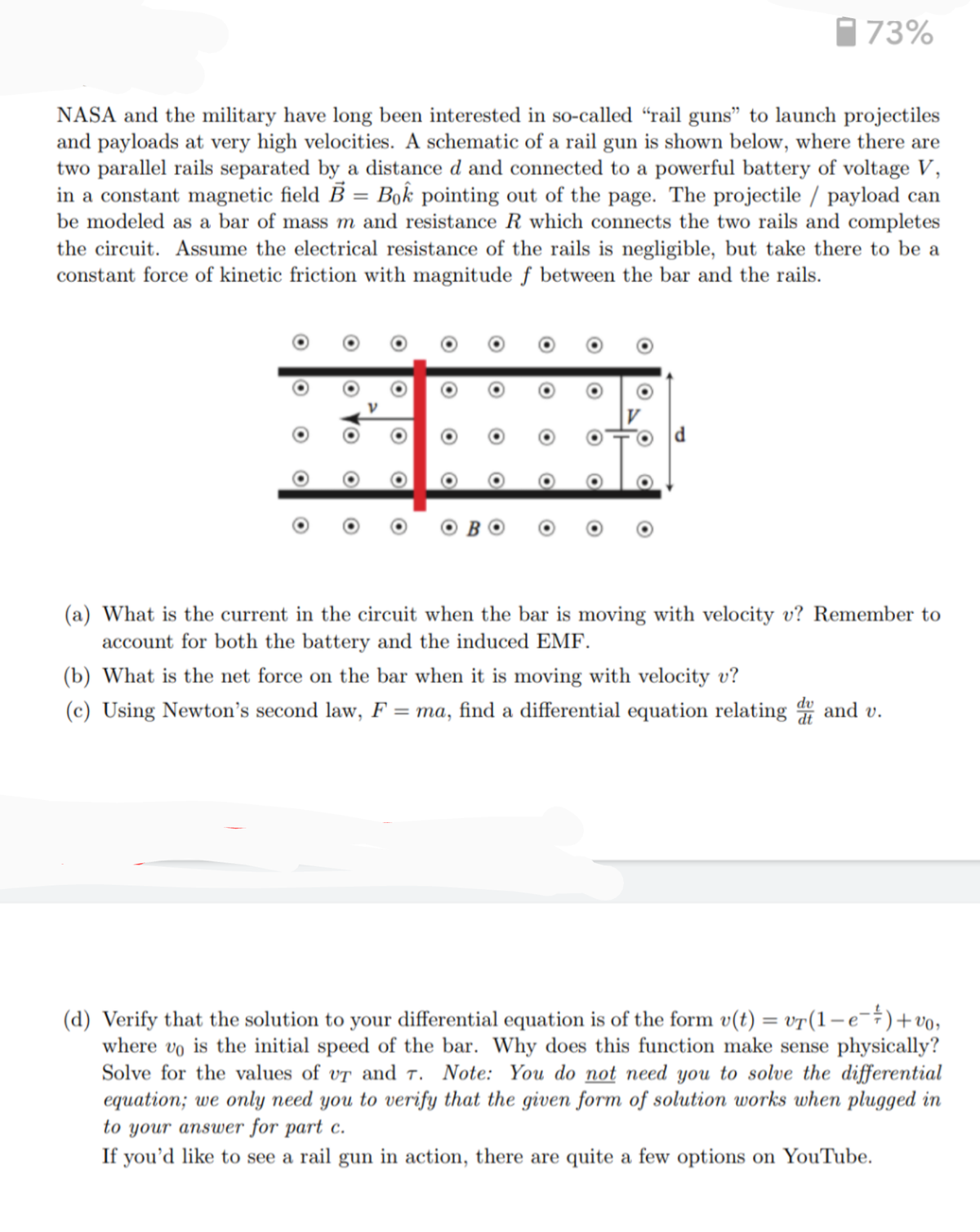NASA and the military have long been interested in so-called “rail guns" to launch projectiles and payloads at very high velocities. A schematic of a rail gun is shown below, where there are two parallel rails separated by a distance d and connected to a powerful battery of voltage V, in a constant magnetic field B = Bok pointing out of the page. The projectile / payload can be modeled as a bar of mass m and resistance R which connects the two rails and completes the circuit. Assume the electrical resistance of the rails is negligible, but take there to be a constant force of kinetic friction with magnitude ƒ between the bar and the rails.
NASA and the military have long been interested in so-called “rail guns" to launch projectiles and payloads at very high velocities. A schematic of a rail gun is shown below, where there are two parallel rails separated by a distance d and connected to a powerful battery of voltage V, in a constant magnetic field B = Bok pointing out of the page. The projectile / payload can be modeled as a bar of mass m and resistance R which connects the two rails and completes the circuit. Assume the electrical resistance of the rails is negligible, but take there to be a constant force of kinetic friction with magnitude ƒ between the bar and the rails.
Related questions
Question

Transcribed Image Text:173%
NASA and the military have long been interested in so-called “rail guns" to launch projectiles
and payloads at very high velocities. A schematic of a rail gun is shown below, where there are
two parallel rails separated by a distance d and connected to a powerful battery of voltage V,
in a constant magnetic field B = Bok pointing out of the page. The projectile / payload can
be modeled as a bar of mass m and resistance R which connects the two rails and completes
the circuit. Assume the electrical resistance of the rails is negligible, but take there to be a
constant force of kinetic friction with magnitude ƒ between the bar and the rails.
(a) What is the current in the circuit when the bar is moving with velocity v? Remember to
account for both the battery and the induced EMF.
(b) What is the net force on the bar when it is moving with velocity v?
(c) Using Newton's second law, F = ma, find a differential equation relating and v.
(d) Verify that the solution to your differential equation is of the form v(t) = vr(1-e-÷)+vo,
where vo is the initial speed of the bar. Why does this function make sense physically?
Solve for the values of vr and T. Note: You do not need you to solve the differential
equation; we only need you to verify that the given form of solution works when plugged in
to your answer for part c.
If you'd like to see a rail gun in action, there are quite a few options on YouTube.
Expert Solution
This question has been solved!
Explore an expertly crafted, step-by-step solution for a thorough understanding of key concepts.
This is a popular solution!
Trending now
This is a popular solution!
Step by step
Solved in 2 steps with 3 images
